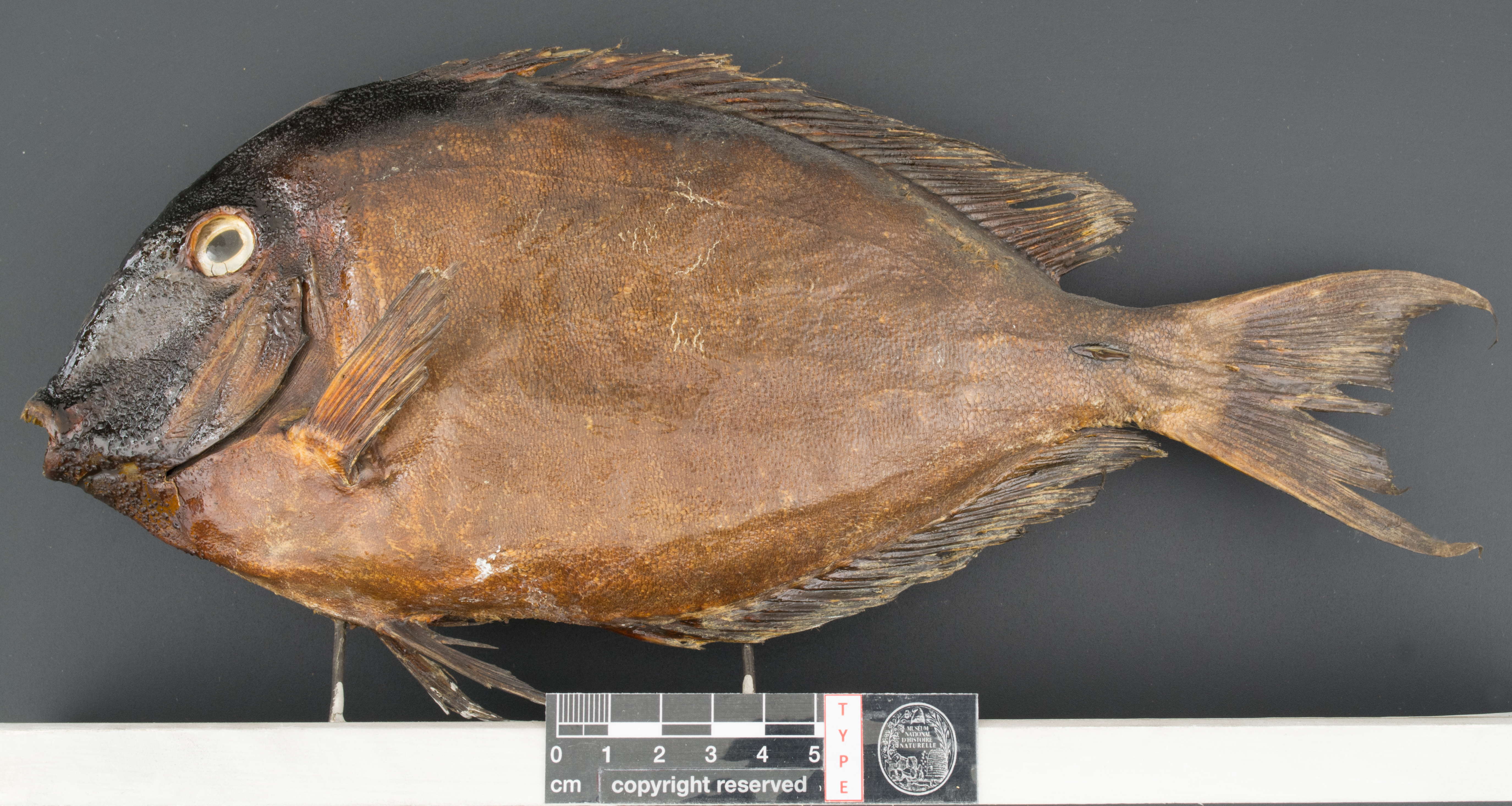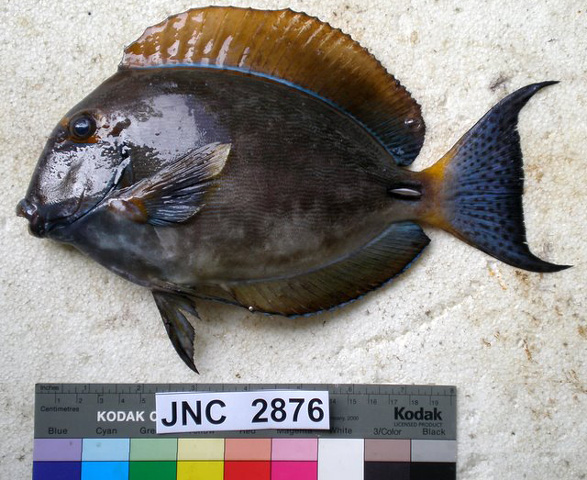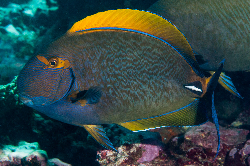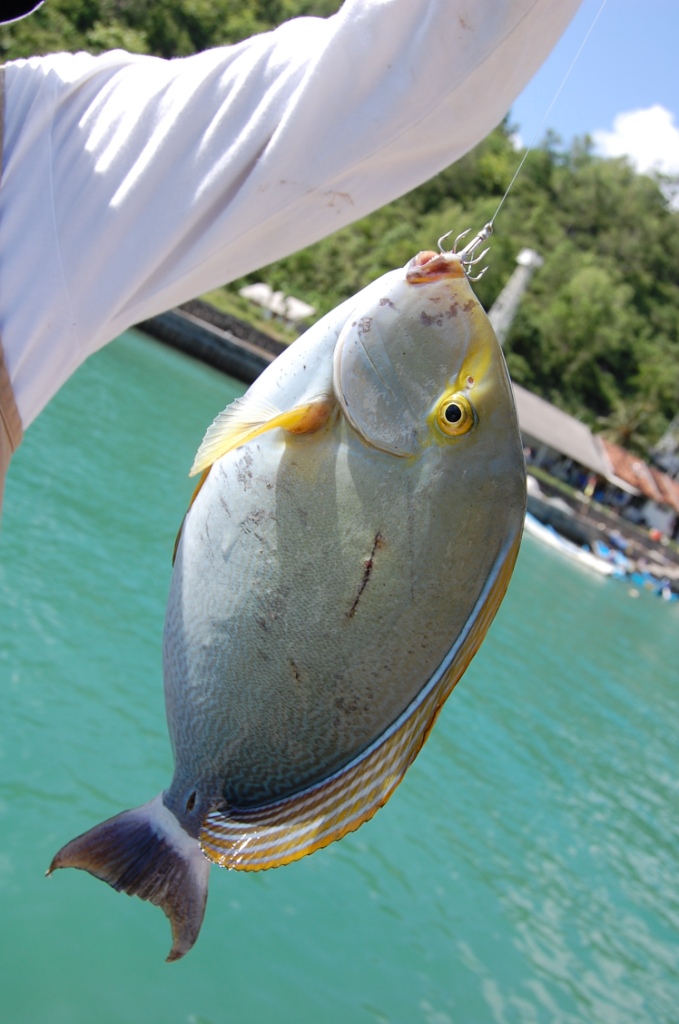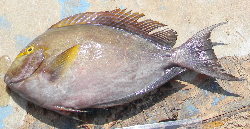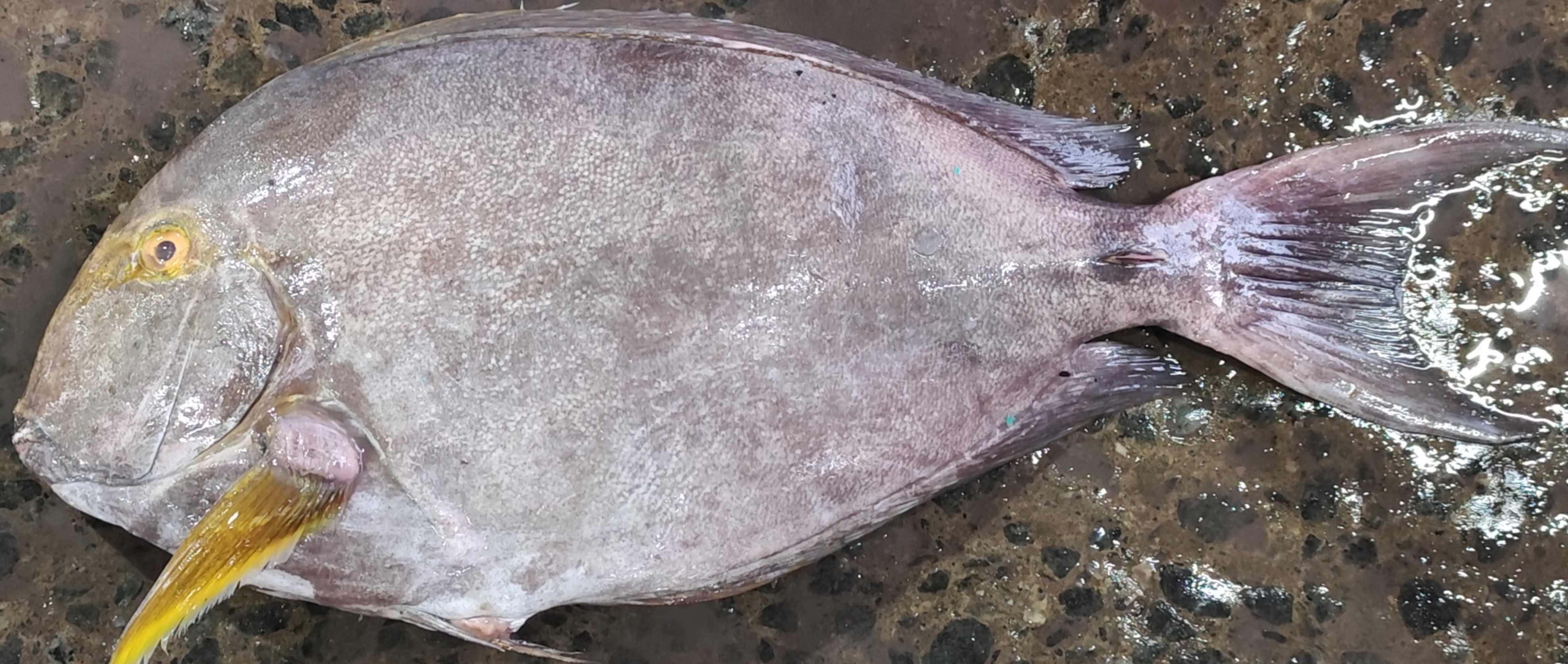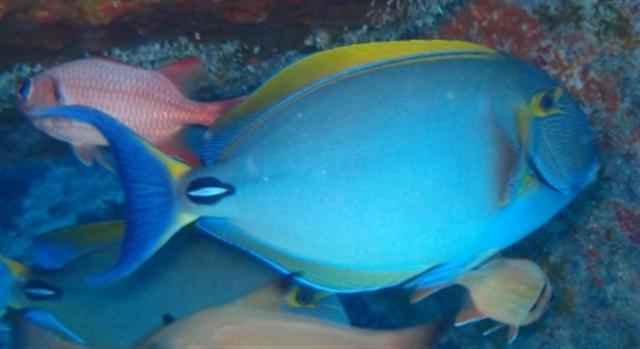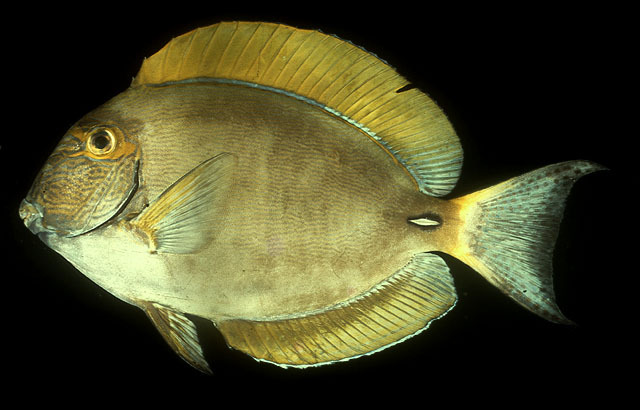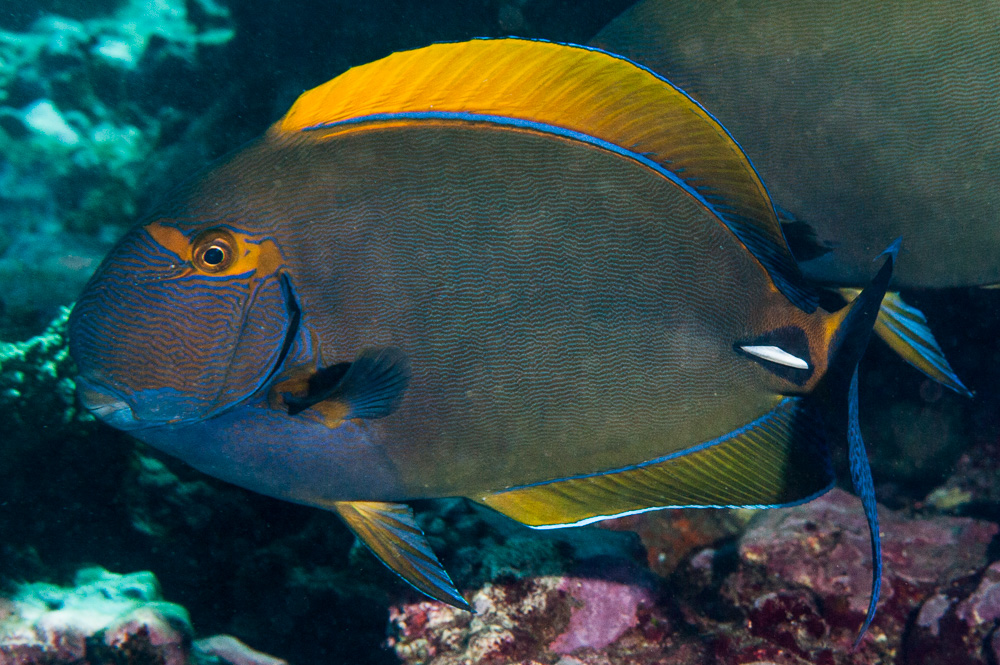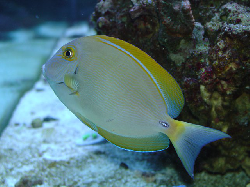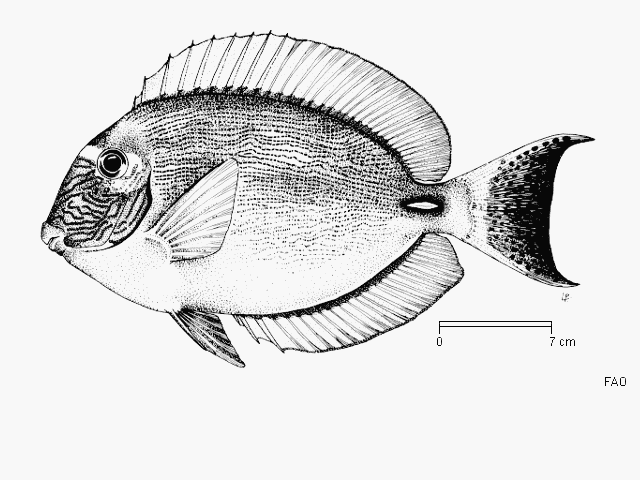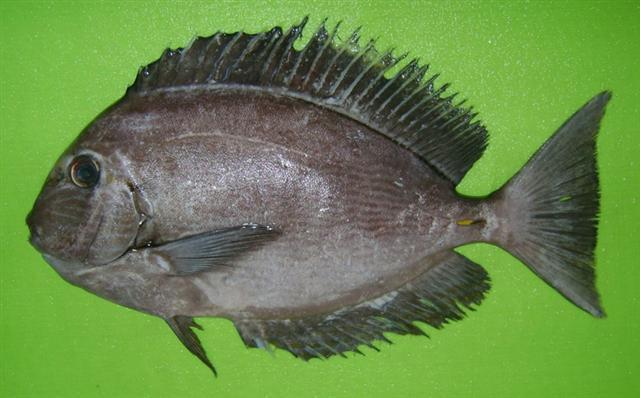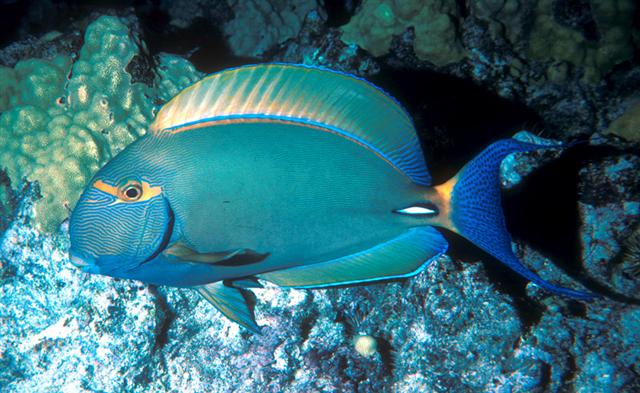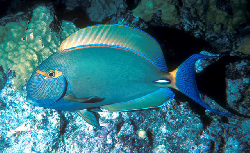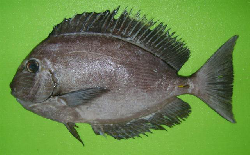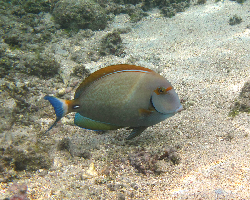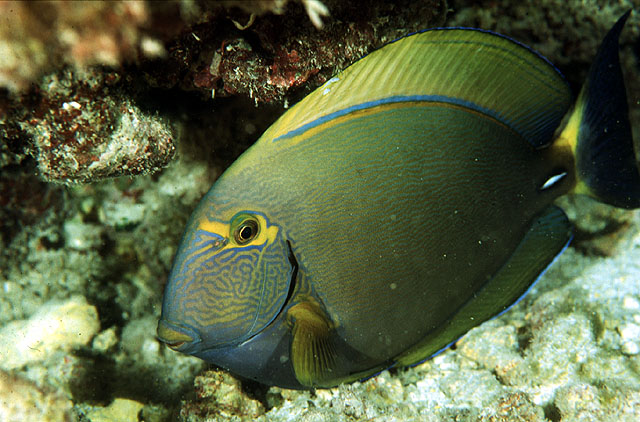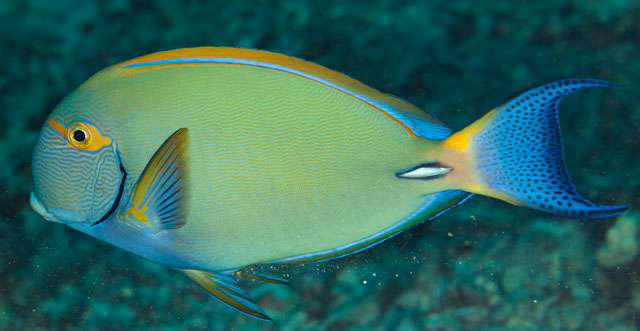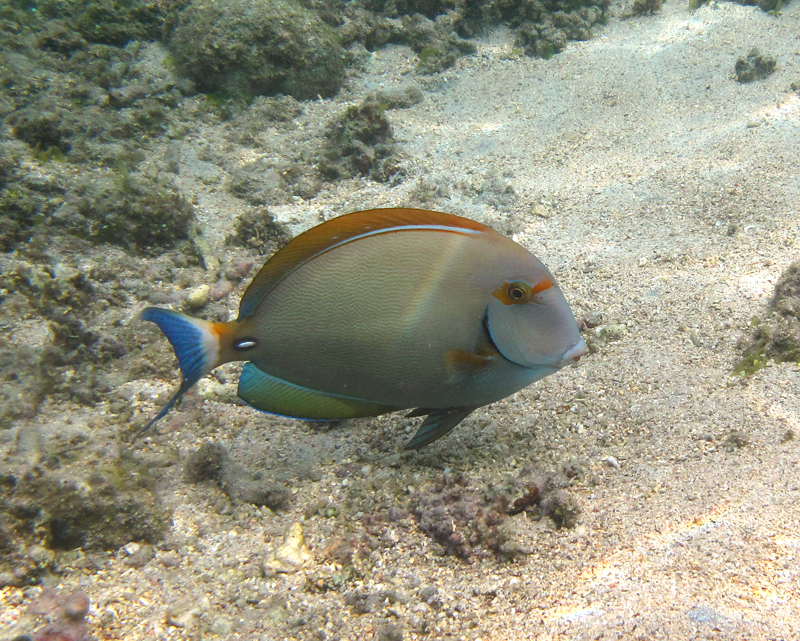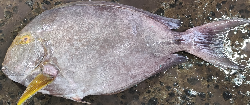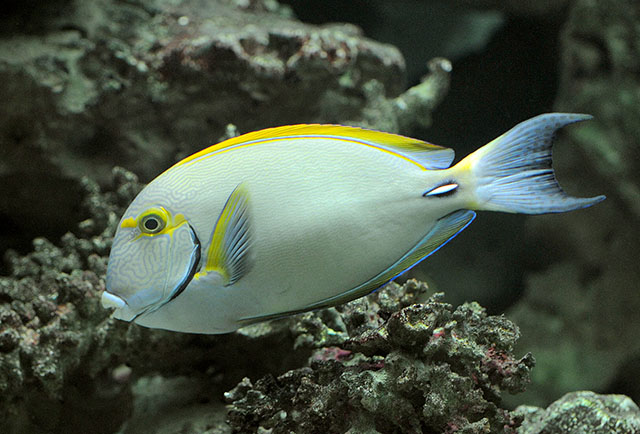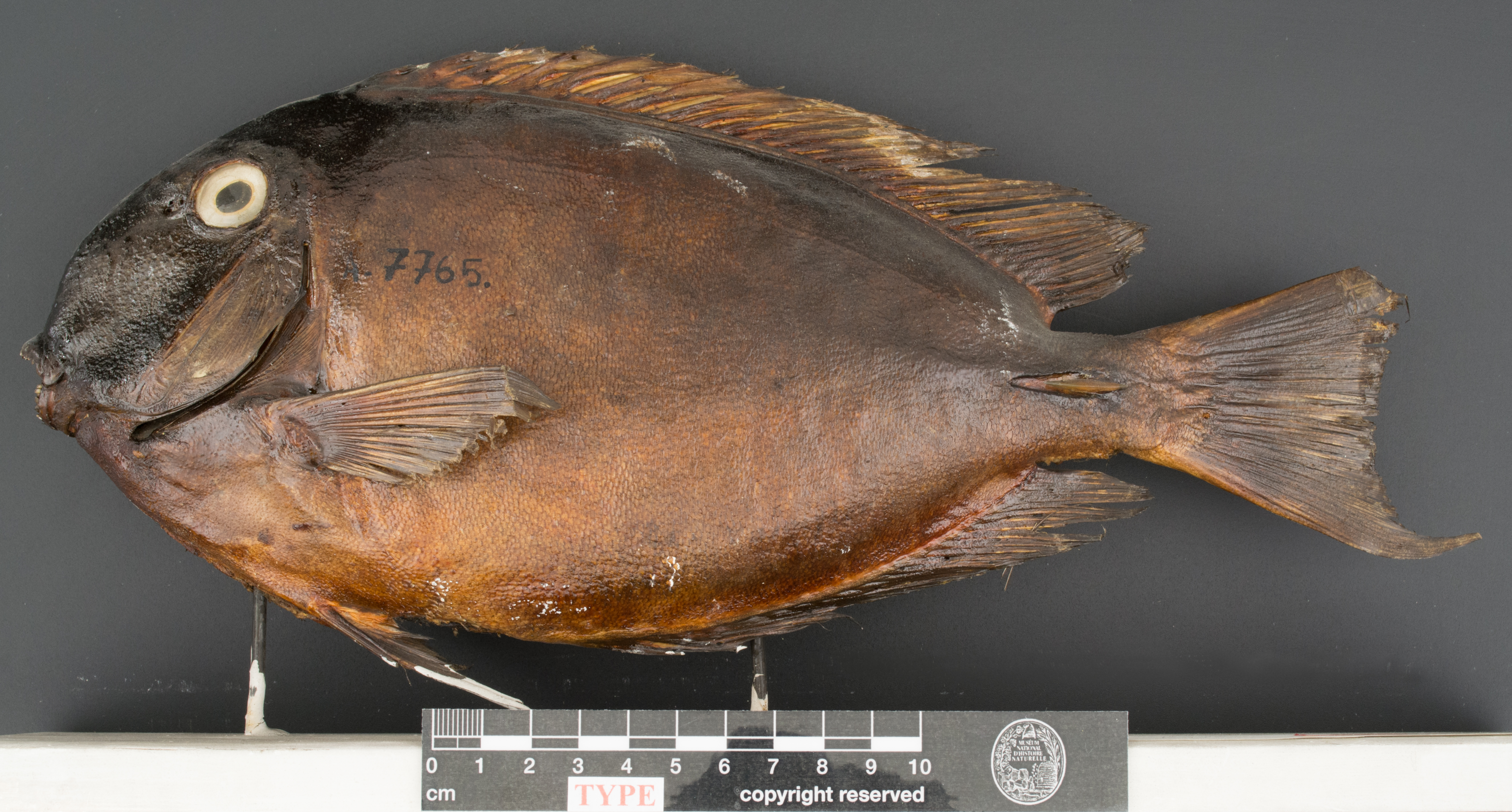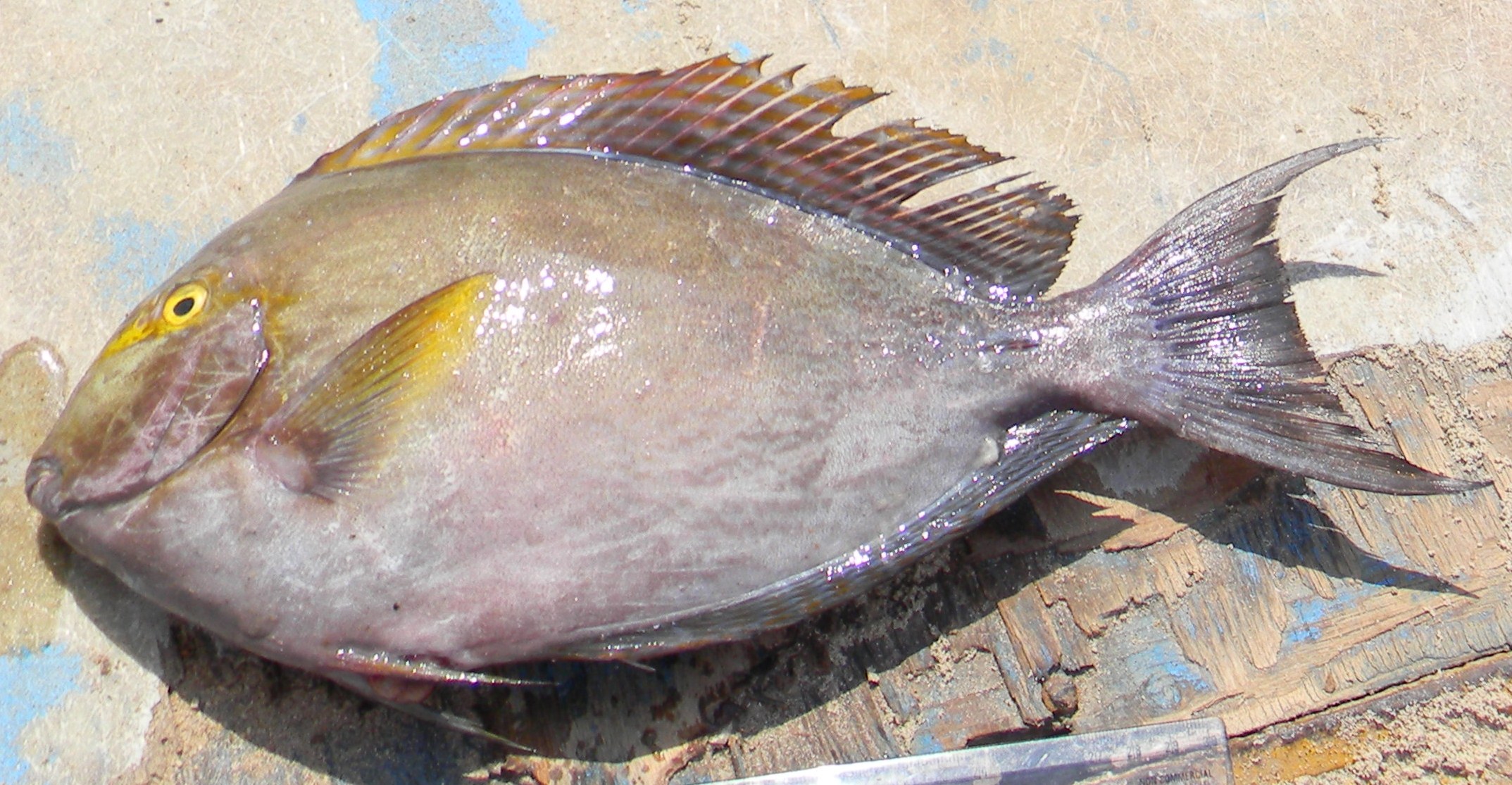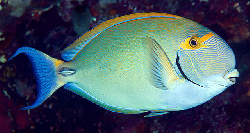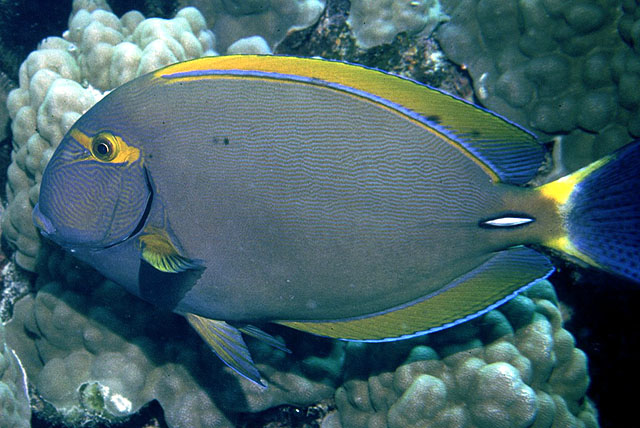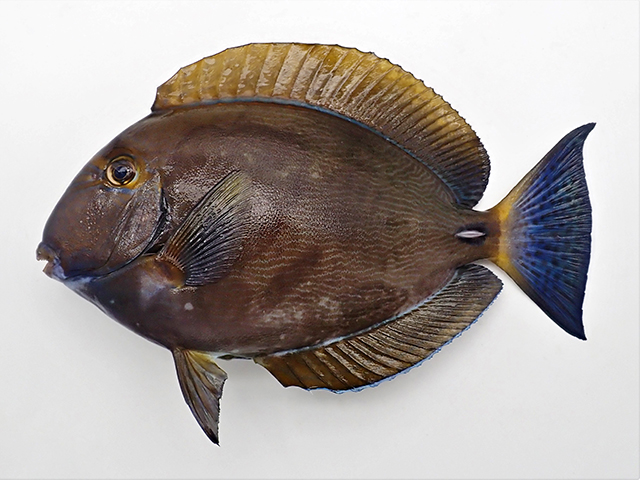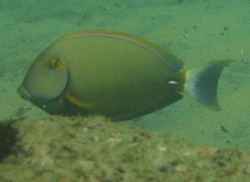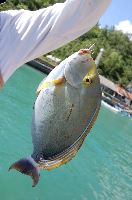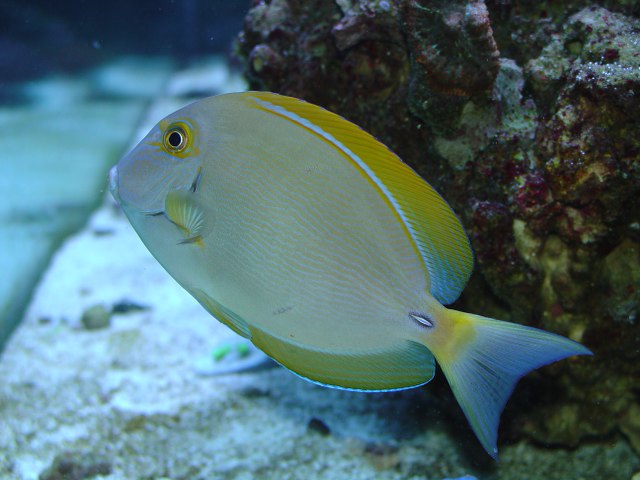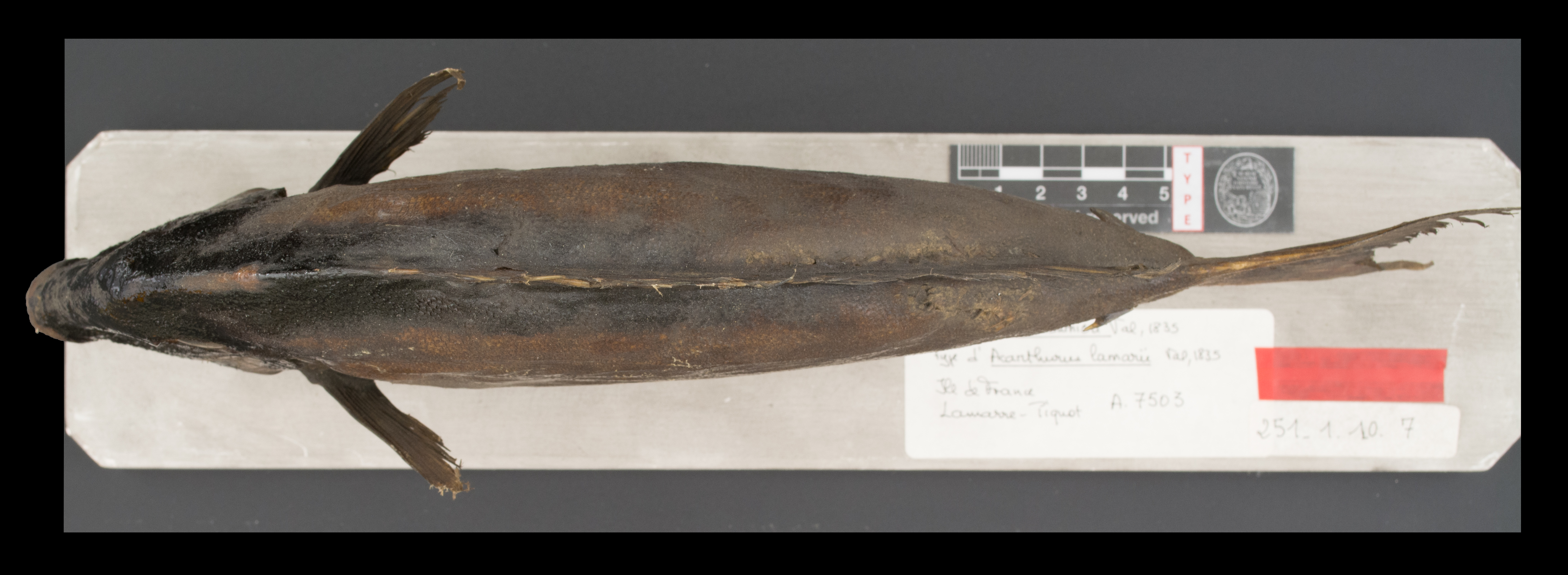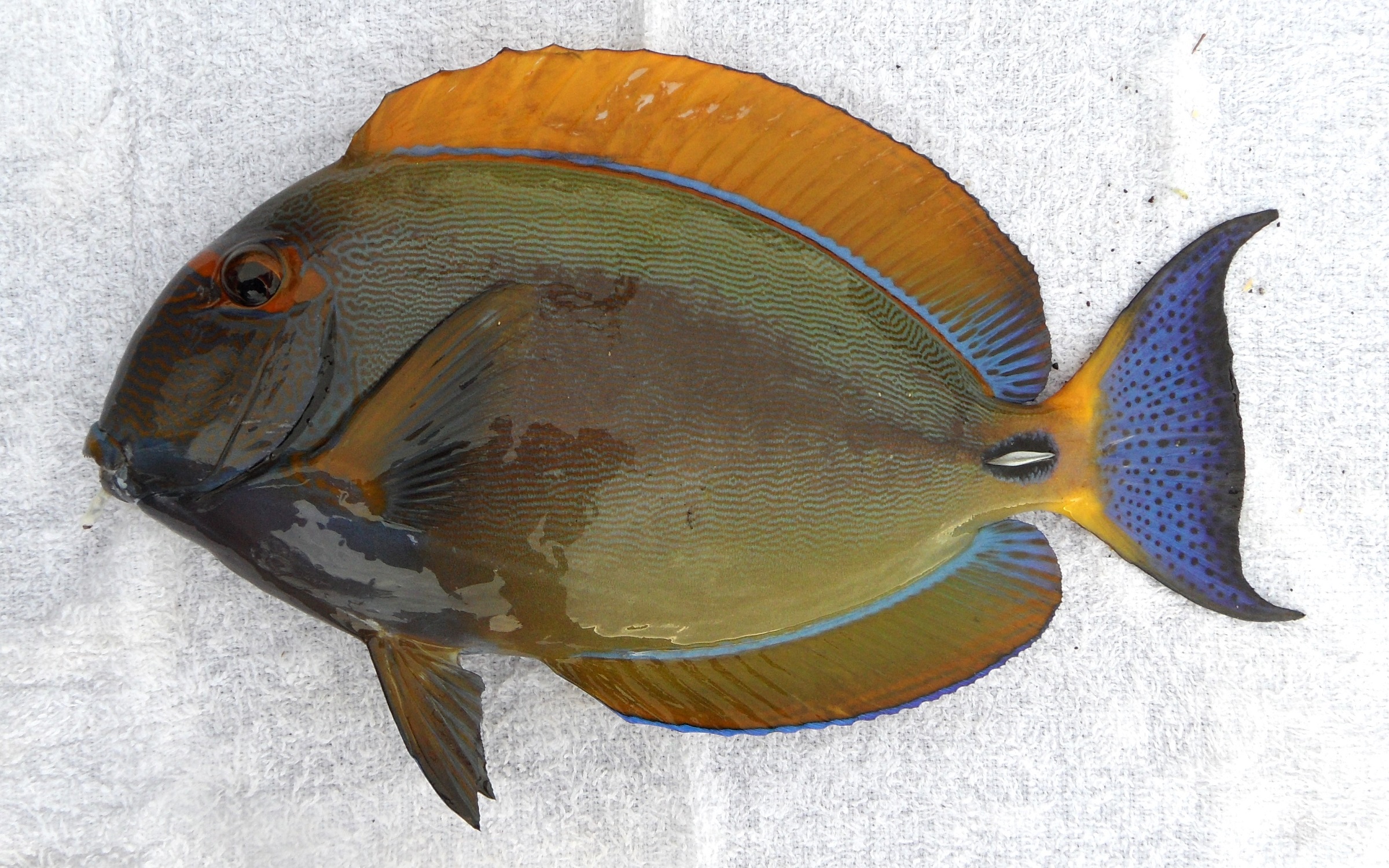Acanthurus dussumieri Valenciennes, 1835
Description
Dorsal spines (total): 9; Dorsal soft rays (total): 25 - 27; Anal spines: 3; Anal soft rays: 24 - 26. Pale brown body; broader, irregular lines on head; orange band between eyes, continued behind each eye to gill cover. Each side of caudal peduncle with single, sharp, forward-pointing erectile spine; spine largely covered by cream sheath; groove surrounded by a black area. Dorsal fin with soft part having longer base than spinous part. Minute scales. Gill rakers 22-26 in anterior row, 23-27 in posterior row. Caudal fin lunate in adults (Ref. 1602).
Common Names
No common names available.
Taxonomic Hierarchy
Kingdom: Animalia
Phylum: Chordata
Class: Teleostei
Order: Acanthuriformes
Family: Acanthuridae
Genus: Acanthurus
Species: Acanthurus dussumieri Valenciennes, 1835
Climate Zone
Location
Biology
Schooling species, usually occurring in seaward reefs at depths greater than 9 m (Ref. 1602). Adults mainly on deep coastal reef slopes and outer reef walls, often on deep shipwrecks. Juveniles found on algae-rocky reef (Ref. 48637). Benthopelagic (Ref. 58302). Occur singly or in groups (Ref. 37816). Feed on surface film of fine green and blue-green algae, diatoms, and detritus covering sand (Ref. 1602). Pair-spawner (Ref. 37816). Mainly diurnal. (Ref. 1602). Utilized as a food fish (Ref. 3146).
Habitat
associated
Conservation Status
Least Concern
Threat to Humans
Harmless

